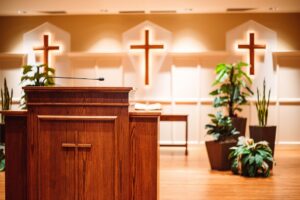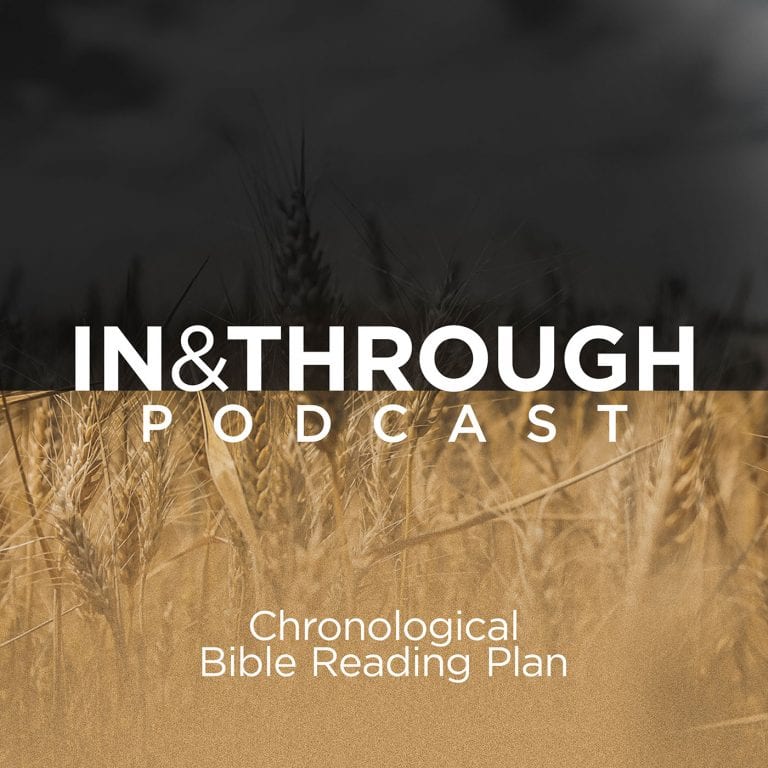I will never forget the moment it hit me.
Toward the end of our first year amid a church revitalization, my family was having dinner with a long-time church attendee. The long-timer turned to me and said, “I just don’t understand why we need to change things. Are we changing things just to change them?” That was the moment. A moment almost one year into this church revitalization.
What made it so arresting was the fact that the sentiment was expressed by someone who had been in the church for years, and watched it decline. Added to that, such an expression came on the heels of months and months of great restraint from us changing much of anything. In that moment, it became clear to me:
Church revitalization is not church planting.
To that point, I had been operating under one paradigm. I had one ready-made model to take to any church, whether revitalizing or planting. This model had been born out of my own experience as part of a church plant in the years prior to seminary. After almost one year into the church revitalization, I failed to realize that I was simply looking to re-package that experience, that method, that “worked” so well in the church plant. Very pragmatic, indeed. However, our gracious God corrected me before I spent more time trying to shove a square peg into a round hole.
Church revitalization is not church planting. The difference between the two is so much more than semantics, nuances, or labels. Even more, understanding the difference can make all the difference, to those considering the call to an existing church in need of revitalization. The path of revitalization will always involve work. However, understanding the difference will allow you to walk the path with far less unmet expectation, frustration, and discouragement.
Here are 3 fundamental ways they differ:
Church Revitalization has history. Church Planting has potential
The church in a church revitalization has history, and often a lot of it. Of course, it is often true that part of that history is forgettable, and part of that history tells the story of how the church arrived at the place where the next option is closing the doors for good. However, there is also part of that history that is worth remembering, and some of that history is very dear to the folks that are still around. For the church revitalization, history is clung to, if even unintentionally.
History is comfortable. History is familiar. Conversely, the thought of potential is not only foreign but often passively resisted.
On the other hand, the church plant has potential, and often a lot of it. In fact, the potential may know no bounds as the entire culture of the new church plant is energized around what God will do. The church plant does not look back, because it cannot look back. It has no history. It has no experience – whether good or bad. It has no wounds, no scars, or no troubles that have brought it to this point. As such, potential is the gasoline that fuels the energy to take that church-in-a-box and put it up and tear it down week after week.
Why is understanding the difference between history and potential important to the would-be church revitalizer? For one, this differing reality is what provides a scaffold for the attitude of each church. The church revitalization is operating primarily from the premise of history, of experience, of what once was. The default is the past. The church plant is operating primarily from the premise of potential, what could be, what will be, what is ahead. The default is the future.
Church revitalizer, understand that for this old, established, history-rich church, potential does not often generate excitement. As you look out at that small, devoted group, understand that they have been-there-done-that. They have likely tried many exciting things that have promised much potential. And ultimately they have all failed. They can be jaded and tired of potential. The memories are comforting to them. And the thought of change offers the scary prospect of distancing them from those memories – even if some of them have been underwhelming.
Now, as you consider church revitalization, or continue with one, it is important to understand that you might very likely be the only one excited about the potential of that local church. Labourer, that is ok. In fact, that is to be expected in a church that is well past the twilight of excitement. Yet, it is in that environment that you do turn to history, and even their own history, not to excite, but ignite. So often in the dying churches around us, the one true gospel of Jesus Christ was once preached.
And what the remnant don’t readily realize is that a church anchored on the gospel, its proclamation and pursuit, is what really the only potential of the church. Often, their church was one that spent a season in that gospel potential. In fact, the history book, the Word of God, tells them that the real infrastructure of any true local church has always been, and will always be the mystery of godliness, Christ Jesus (1 Timothy 3:15–16).
They don’t need to get excited about the potential of their local church. What they do need is to get ignited about pursuing the pillar of the church––King Jesus.
Church Revitalization is resource-ready. Church Planting is people-ready
Churches in need of revitalization may be missing a lot of things. However, there is one thing they almost always do not lack: a building. Conversely, church plants have many things, including energy, willingness, and ideas. However, there is one thing that they almost always lack: a building. Far from simply stating the obvious here, this point is one that is so apparent that it can regularly be overlooked.
As the church planter bemoans the lack of a building, the constant threat of rent hikes, set-up fatigue, and even the always present threat of being homeless, he must also remind himself of the one resource that His providential God has given him, and that is people. In fact, not just people, but willing and energized people. Building or not, a mobilized, energetic and willing group can go far. Just consider that first group in Judea that comprised the first local church (Acts 2:42–27, 4:32–37). They went far without a building.
For the church revitalization, the want of a building is never a concern. Yet, that tremendous blessing can so often be overlooked as the church revitalizer considers the energetic church plant his friend in another city is overseeing. The church plant is bursting with energy it would seem. The church plant is overrun with willingness. The church plant is actually holding people back. All this while the church revitalization is still trying to find a mere pulse for its people. For the church revitalizer, this quest for passion and energy so often can cause the great blessing of resources to be missed entirely.
Yes, the church is not a building, but the Lord uses that building to strengthen and stabilize the local church. The people, the energy, the willingness may not all be there yet. However, for the revitalization, it is ready. There is no having to hold people back when God stirs a heart to begin. Instead, there is a room, and it’s not temporary.
What the church revitalizer must keep in mind is that a few people in a big building for the first night of a midweek ministry, may feel discouraging, but it is actually far from it. You can count the heads on two hands, but you don’t need to tabulate the mortgage.
It may feel awkward, and insecure to gather for the first time on a Saturday morning to “dig in,” but the small gathering does it in a building that is their own. And above all that, the Lord encourages us not to despise those small beginnings (Zechariah 4:10).
As you consider church revitalization, consider the fact that there are countless dying churches out there that may not be filled with energized people, but the fact that they are ready to handle them should energize you. Church revitalization often has the resources, the existing building, and the opportunity. Yet, they so often seem so vastly underused in those early days. We must remember that it is God who brings the willing and God brings the increase (1 Corinthians 3:6). Until then, the church revitalization can take comfort in the fact that they are ready.
Church Revitalization needs spurs. Church Planting needs reins
One thing that both a revitalization and a plant require is patience. The difference is how that patience needs to manifest itself. For the church plant, patience is needed so that the church does not move too fast. Ideas are overflowing in the church plant, excitement builds at core-group meetings as prospects are talked about and plans made.
There is just so much to do, and just so little time. And so, patience is needed for all things to unfold in their due time (Ecclesiastes 3:1). The church planter needs to rein in his excitable, but untested, group.
For the church revitalization, patience may be needed, but not of that kind. For the one involved with revitalization, he often wonders what to do with all the space and time that God has given this local church. The overwhelming feeling that not enough is being done, envelops the church revitalizer. He sits, often alone in that church building during the week, as the days pass on into weeks, and the weeks pass on into months, with little signs of any progress. He wonders when people will rise, move, and become engaged. The church revitalizer looks to spur on his tested but dispassionate group.
Both the revitalization and the plant require patience. As you consider the revitalization, consider the fact that the church will move at Christ’s pace, not yours. Take the opportunity to cultivate your own patience as you wait on the Lord, and the people that the Lord has given to you. Temptations to impatience will come, and even in waves at times when you are soldiering on through months wondering if the needle is moving in your church at all.
However, it is in these times that we remember that it is not just Christ’s pace, but Christ’s church. He not only knows what is needed for his bride, but also when it is needed. Church revitalizers, remember it is much easier to add, than subtract. You are blessed with time to weigh each new addition, person by person, program by program. That is a luxury most church plants lose quickly, as they grow quickly.
Not So Different After All
Indeed the church revitalization is not the church plant. The revitalization looks back, the plant looks forward. The revitalization has resources, the plant has people. The revitalization feels like it’s going too slow, while the plant feels like it’s going too fast. Whatever one we are called to, we must always keep these distinct differences in mind.
However, in the end, though the revitalization and the plant may be on different paths, their purpose is the same––and that is to glorify the One that purchased them (Ephesians 3:20–21). Whether the church looks to their past, or to their future, they do so knowing that they have endured and will endure because of the bedrock assurance of Christ (Matthew 16:18). Whether the church is stabilized by a building or energized by its people, they find their ultimate anchor in Christ, the head of the Church (Ephesians 1:22).
And whether the church progresses too slow for us, or much quicker than we imagined, the timing is all from above (Ecclesiastes 8:6). Every true church, ultimately, shares a common purpose and a common head. We can each rejoice in the unique context that God places us, whether a church revitalization or a church plant, knowing that our efforts and our patience are never in vain (1 Corinthians 15:58).




















